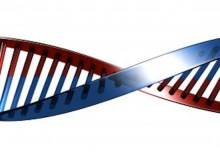Harvard Researchers Smash DNA Storage Record By Encoding Book, JavaScript and More

Plans for storing information on DNA been around for a while. That makes sense when you think about it from a computing perspective — after all, DNA is really just a super-efficient substance for storing the biological instructions on how to make organisms. So if DNA can store the blueprints for the most complicated machines on the planet — a lung, an eye, a brain — it follows that the double helix can also be manipulated to more noble ends, like storing our spreadsheets, invoices, and episodes of Firefly.
The main strike against DNA hard drives has been that the technology hasn’t caught up with the principle underlying it. While translating 1s and 0s into complex ideas and concepts is relative child’s play at this point, translating words and pictures into the language of DNA is still a major feat. The tech reading and writing genome sequences continues to become faster and less expensive, though, and DNA drives are finally gaining traction and emerging from the fringes of science fiction.
They even saw some limited success last year, when Craig Venter’s team shuffled the DNA of their synthetic biological organism to include a watermark. That watermark was only 7,920 bits, a number the team at Harvard leaves in the dust by magnitudes of order by storing more than 5 million bits of information
Storing information on DNA is strikingly similar to storing it on a conventional hard drive. Large chunks of information are broken down into more manageable pieces called sectors. These sectors actually still operate according to traditional binary operations — A-C DNA connections read as zeroes, while G-T connections read as ones.
The Harvard team’s DNA drive is still in its infancy. Millions of bits of data really isn’t that much in this day and age, frankly. And since the storing of DNA is created as information is encoded, the drive is read-only at the moment, with rewritable technologies not currently on the horizon.
(via New Scientist)
- This DNA brain in a test tube can play 20 Questions
- And that first synthetic organism? Totally pirating content already
- This is the thing you do after you complete the very important business of sequencing the marijuana genome
Have a tip we should know? tips@themarysue.com